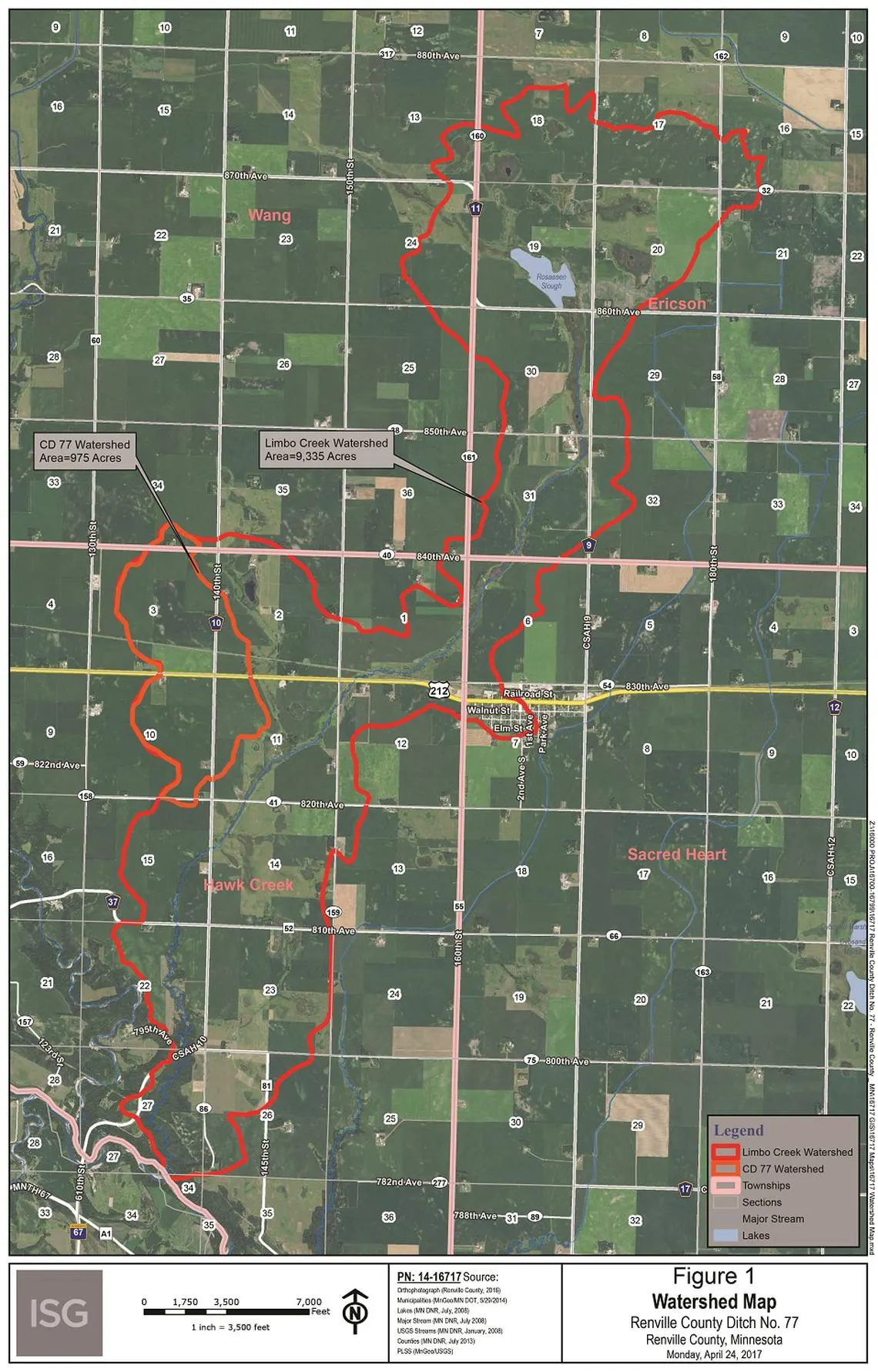In a late September ruling, the Minnesota Supreme Court affirmed that Limbo Creek, the last free-flowing stream in Renville County, is a protected public water. This ruling means that any drainage projects for the creek must go through an environmental review. CURE (Clean Up the River Environment), a Montevideo-based rural organization, applauds this ruling as a win for the health of the severely impaired Minnesota River, downstream communities, and all Minnesotans.
Limbo Creek plays an important role in water health by meandering across the landscape, slowing down, and filtering water—in contrast to the many straightened ditches across Renville County that quickly move water off the land. However, landowners proposed to ditch and straighten over a mile of Limbo Creek to improve drainage on their land. Renville County approved the project’s engineering plans without subjecting the proposal to environmental review. This is when concerned local landowners formed the Protecting Public Waters group and contacted Minnesota Center for Environmental Advocacy (MCEA), CURE, and others for assistance.

“CURE values and understands the importance of local control in the decision-making process. Water is not confined to county boundaries and decisions upstream impact the communities downstream,” said Peg Furshong, director of programs at CURE and a Renville County resident who lives near Limbo Creek. “State oversight and the classification of public waters is critical. For counties downstream of ‘local control’ water decisions, their financial burdens have grown in addition to the bill all Minnesotans pay to manage flooding and repairs. The ruling today reminds us that public waters are held in trust for the use and enjoyment of the public today and for future generations.”
While this Minnesota Supreme Court ruling on Limbo Creek is a narrow decision, the issues around Minnesota’s waters are not. Limbo Creek is just one of the tributaries that feed the Minnesota River. The cumulative impact of hundreds of ditches funneling the water from hundreds of thousands of acres of tiled farmland has transformed southern Minnesota and the entire Minnesota River Valley.
“This decision protecting Limbo Creek takes us one step closer to ensuring that permitted drainage projects must benefit all citizens, not just the agricultural industry. The age of uncontrolled pollution in the name of agriculture must end, or our public waters will continue to degrade,” said Tom Kalahar, a retired conservationist who worked in Renville County for 35 years in the Soil and Water Conservation District. Kalahar is also a part of Protecting Public Waters, a co-litigant in this case.
The ruling also highlights the need to include a diversity of voices and more comprehensive information in the decision-making process around infrastructure, especially regarding water.
“Tragically, Minnesota has pervasive problems with flooding, poor water quality, and loss of wetland habitat. Correcting these problems is an arduous effort. The Supreme Court decision again demonstrates how important it is to have accurate and adequate information before making decisions that impact our public waters. We once again urge that local units of government obtain adequate information on the impact of drainage projects on already impaired streams and rivers,” said David Minge, former congressman, and retired Minnesota Court of Appeals judge.
In the next several decades, the issues rural Minnesotans will face around water will grow in complexity and importance. The Limbo Creek decision is likely the beginning of these discussions, not the end.
“Water is at the nexus of climate issues and agriculture; it is important that we work together to make better decisions for rural communities that protect our water for everyone,” stated Furshong from CURE. She continued, “The reality is that weather impacts our water and we know that our aquifers are fragile and that we need to plan now for the future. Currently, we have a water crisis in several regions of the United States and globally – we should be working with policymakers to ensure that water will be protected now and for future generations.”


